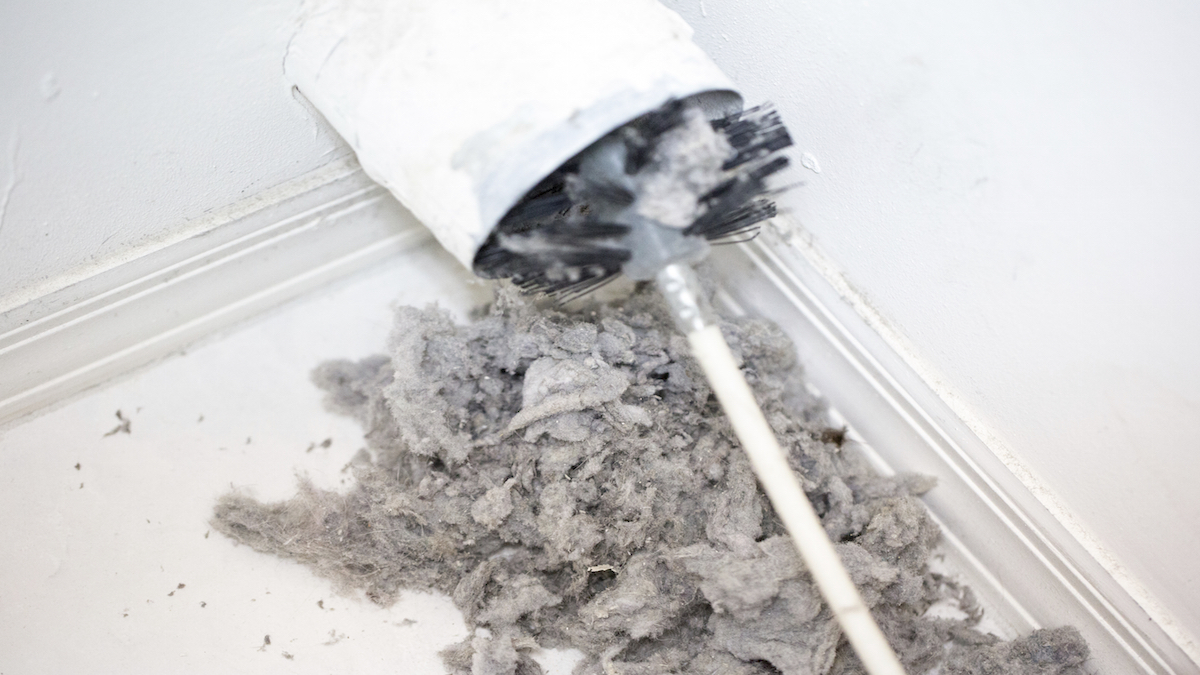
Does the unit owner own the dryer vent or does the association or does the association and owner split the ownership?
ANSWERS:
This is a question that can only be answered by looking at the definitions of Unit and Common Area in the Declaration.
Sara A. Austin
Austin Law Firm LLC
226 E. Market St.
York, PA 17403
717.846.2246 phone
717.846.2248 fax
saustin@austinlawllc.com
In most Associations, dryer vents are limited common elements. They typically serve only one dryer, thus only one unit.
Many Associations require dryer owners to clean their own vents and submit annual verification to the Association.
For a more definitive answer, the requestor should obtain a legal opinion from a qualified attorney in their jurisdiction.
David G. Hellmuth
Attorney at Law
P: (952) 746-2107
F: (952) 941-2337
dhellmuth@hjlawfirm.com
8050 West 78th Street
Edina, MN 55439
Without the documents to review, generally if the dryer vent services only the single unit I would say that the unit owner has sole responsibility. If the vent from the unit feeds into a common vent with other units then the unit owner has responsibility for the vent connection from the unit to the common vent and the association has responsibility for the common vent.
Kenneth D. Roth, Esq.
Marchetti Law, P.C.
900 N.Kings Highway, Suite 306
Cherry Hill, NJ 08034
kroth@marchettilawfirm.com
Tel: 856-824-1001
Fax: 267-219-4838
To answer this question, you would need to look at your Master Deed, usually around Section or Paragraph 4. That section of the Master Deed describes exactly what constitutes the Unit. Paragraph 5 or so, describes what constitutes the common elements.
Usually, however, it works like this:
The Association is responsible for maintenance of the “common elements”, which in general, means things shared in common with others. So, for example, pipes conduits, wires, etc. that are subject to common use are generally maintained by the Association.
After the part of the Master Deed (usually Paragraph 4) which sets out the borders of the unit by top, bottom and sides, there appears a subsequent paragraph that says something like, “Each unit also includes all items (more fully described) which serve one unit only, even though some or all of the object is not within the borders of the unit”. Thus, for example, if you have an air conditioner condenser unit outside, but it serves only your unit, it is yours, even though it is not located within the four corners of your unit.
To return to your question, a dryer vent pipe that solely serves one unit is more likely to be yours to maintain, and a dryer vent pipe that serves more than one unit is likely to be a common element.
Be careful though. You also have to read the rest of the documents to make sure that there isn’t a maintenance provision elsewhere in the governing documents which alters this maintenance/ownership issue. One of the unusual things about community association living is that maintenance responsibilities are often separated from ownership.
Griffin Alexander, P.C.
Robert C. Griffin, Esq.
415 Route 10
2nd Floor
Randolph NJ 07869-2100
(973) 366-1188
rgriffin@lawgapc.com
Either the state statute (or the condominium document establishing the horizontal regime) where this party resides, or both will contain definitions of what constitutes a Unit and what constitutes the Common Elements. Those definitions will provide the answer to the question presented.
Nelson Mullins
Patrick O’Dea
BNC Bank Corporate Center, Suite 300
Myrtle Beach SC 29577
(843) 946-5631
patrick.odea@nelsonmullins.com
http://www.nelsonmullins.com
The portion of the dryer vent that is located within the unit or home (as defined in the particular applicable governing documents) is the owner’s responsibility. That portion of the dryer vent that is located within the common elements also as defined in the governing documents, is the responsibility of the association. Therefore I suppose you can conclude that ownership coincides with responsibilities as addressed herein.
Stacey R. Patterson, Esq.
Ansell Grimm & Aaron, PC
365 Rifle Camp Road
Woodland Park, New Jersey 07424
Ph: (973) 925-7343
Fx: (973) 860-2373
srp@ansellgrimm.com
www.ansellgrimm.com
Typically the Governing Documents of the Association provide that the Dryer Vent is considered part of the Unit (even though it may penetrate other areas and the common elements). To the extent that the dryer vent is considered part of the unit, the unit owner is responsible for cleaning, maintaining and replacing the vent. If the Unit owner fails to clean, maintain and/or replace the dryer vent (when necessary) the Governing Documents likely authorize the Association to take such action on the Owner’s behalf and to charge any related fees and costs to the Unit Owner’s account as a remedial assessment.
Tana Bucca, Esq.
222 Ridgedale Ave
Cedar Knolls, New Jersey 07927
T: 973.998.8360
F: 973.349.1274
tbucca@stark-stark.com
www.Stark-Stark.com
The answer depends on whether or not the dryer vent is included within the definition of a unit in the condominium’s governing documents. The fact that the dryer vent is located outside of the “four walls” of the unit does not necessarily mean that it is a common element. In fact, while the governing documents may not specifically list the dryer vent as being included within the definition of a unit, we have found that many governing documents define the unit to include improvements which are exclusively associated with or used in connection with the unit although all or part thereof may be located outside the unit. A dryer vent is the perfect example of such an improvement. In that circumstance, assuming the dryer vent only served one unit, it would be a part of the unit and therefore the responsibility of the unit owner to maintain, repair and replace. Unless, of course, the governing documents specifically required the association to nonetheless maintain dryer vents.
Martin Calabar
Becker & Poliakoff
67 Park Place, Suite 702
Morristown, NJ 07960
Tel: 973.898.6502
Fax: 973.898.6506
mcabalar@bplegal.com
Tags: Question
Trackback from your site.